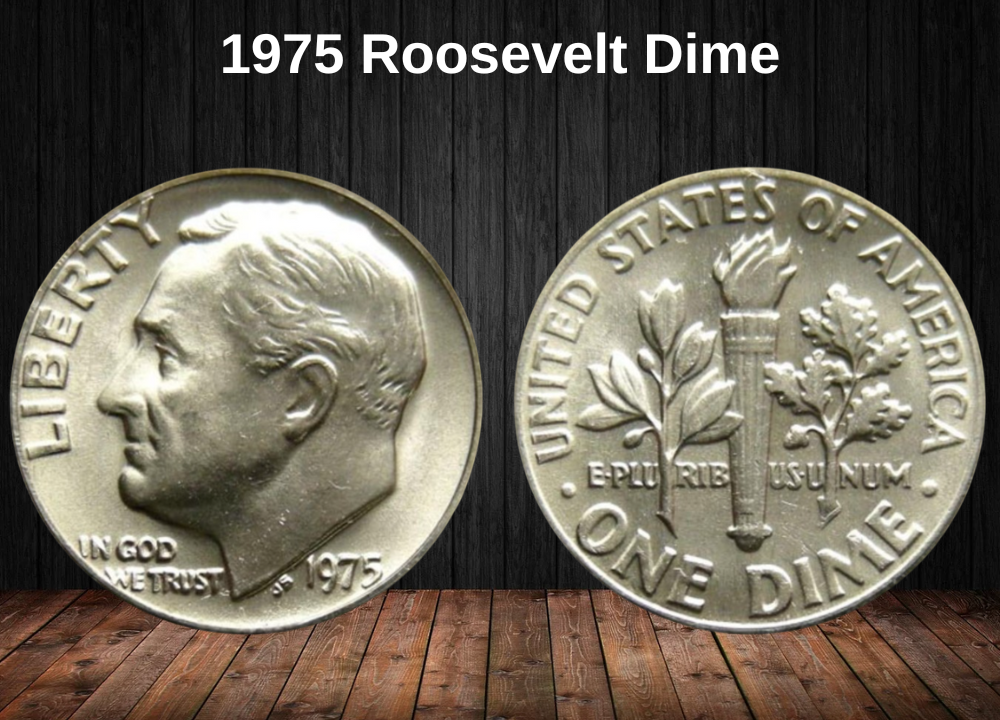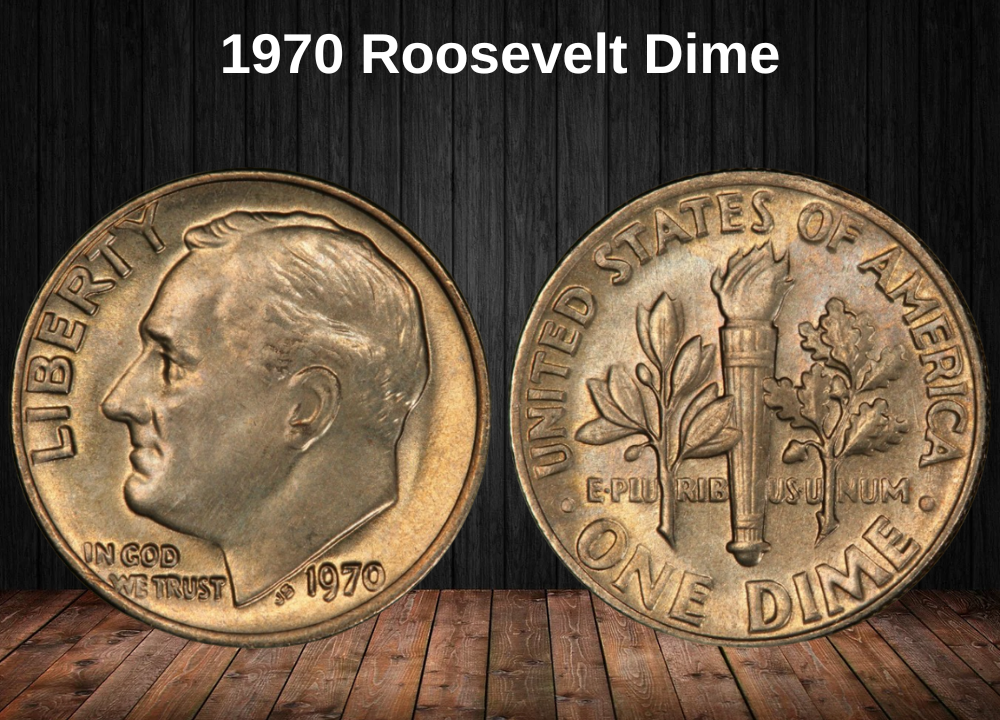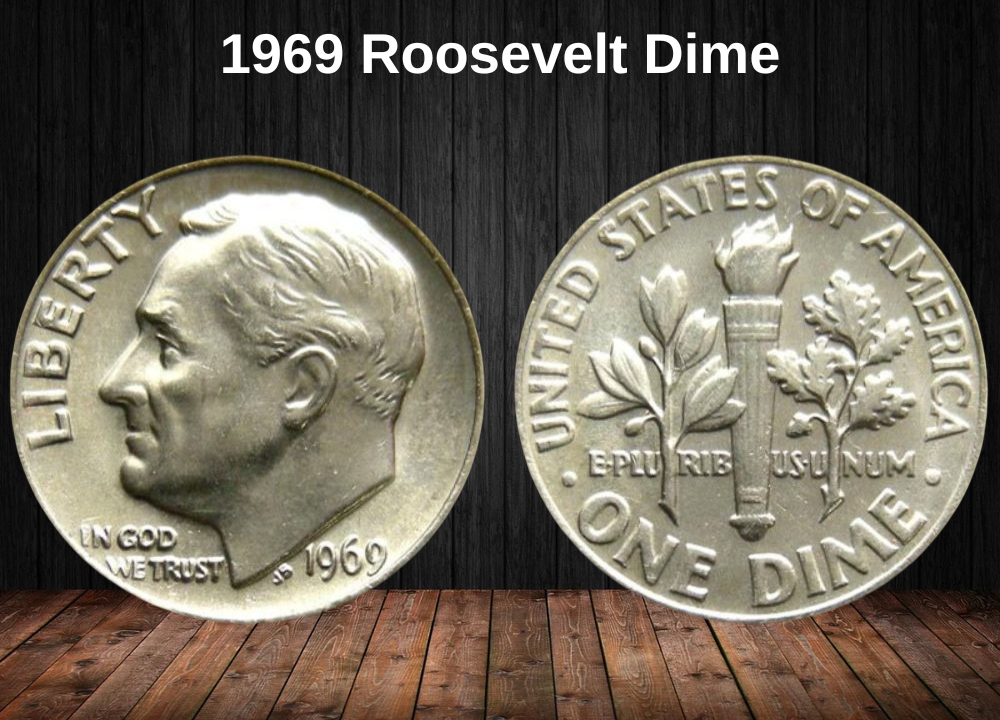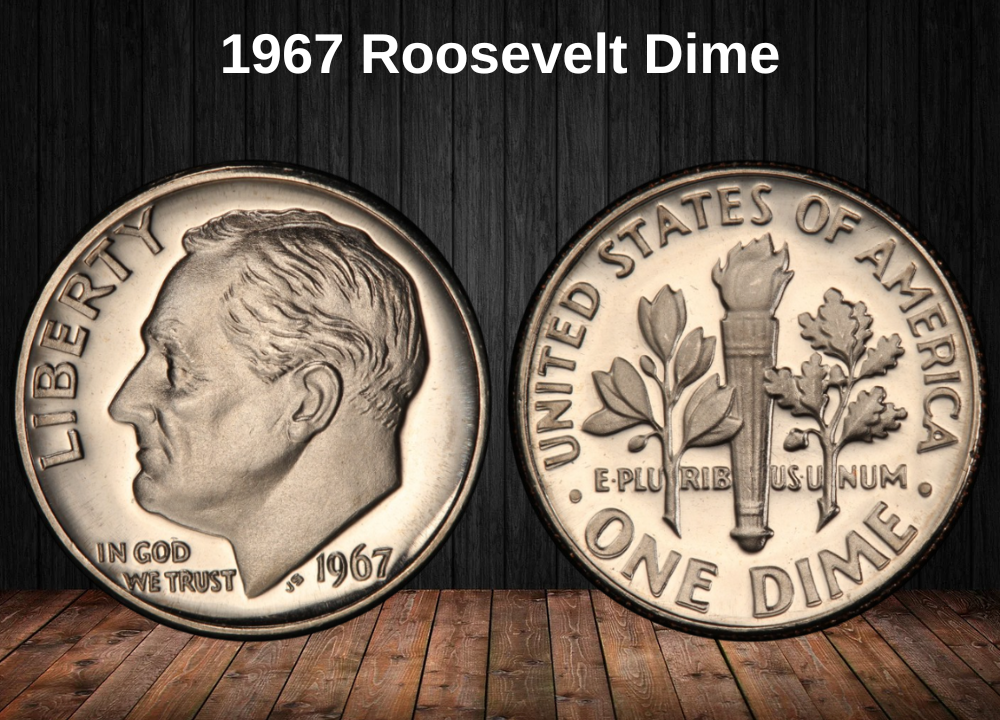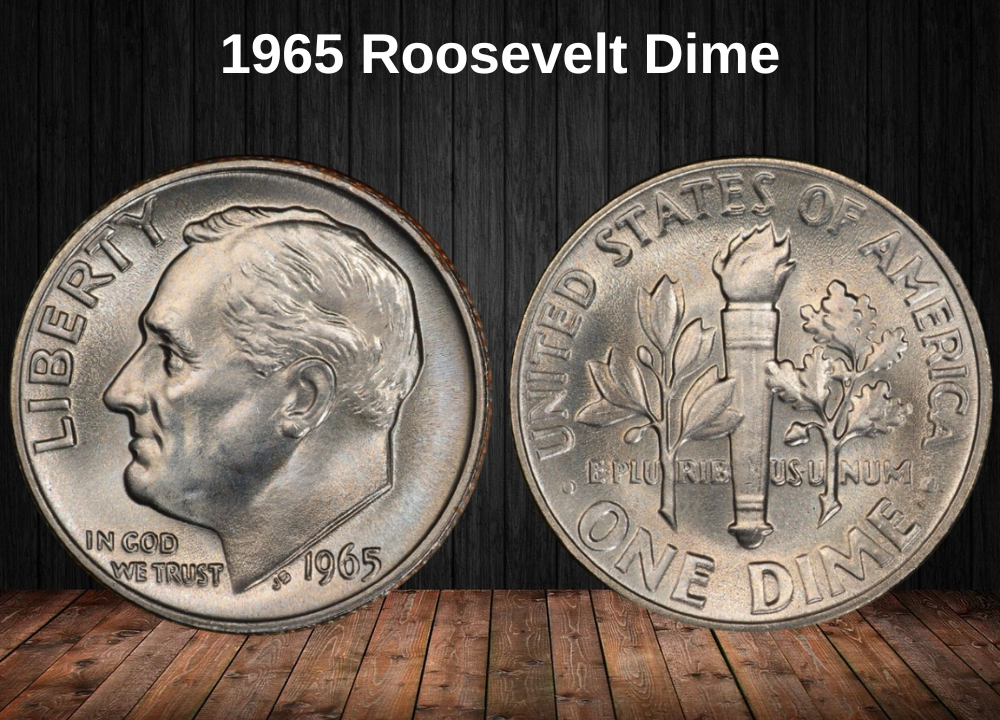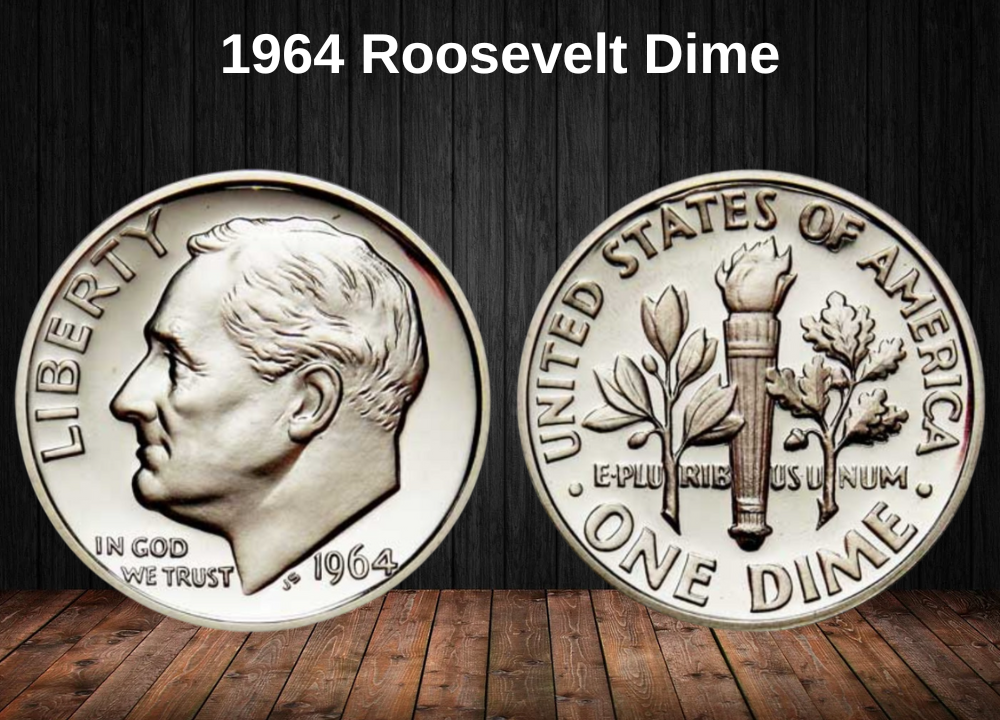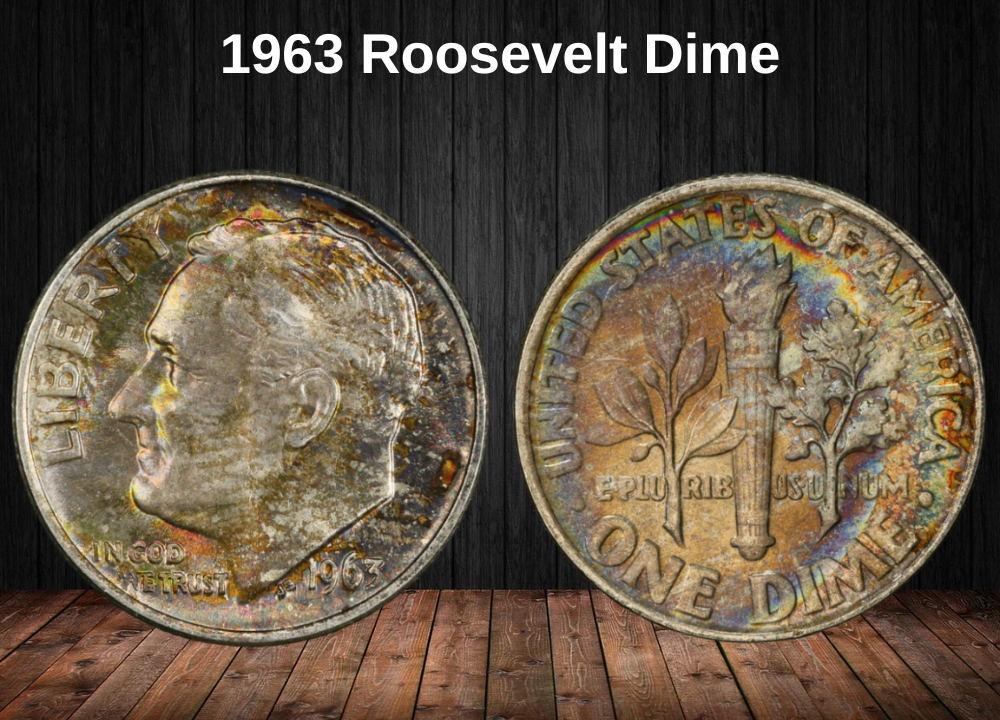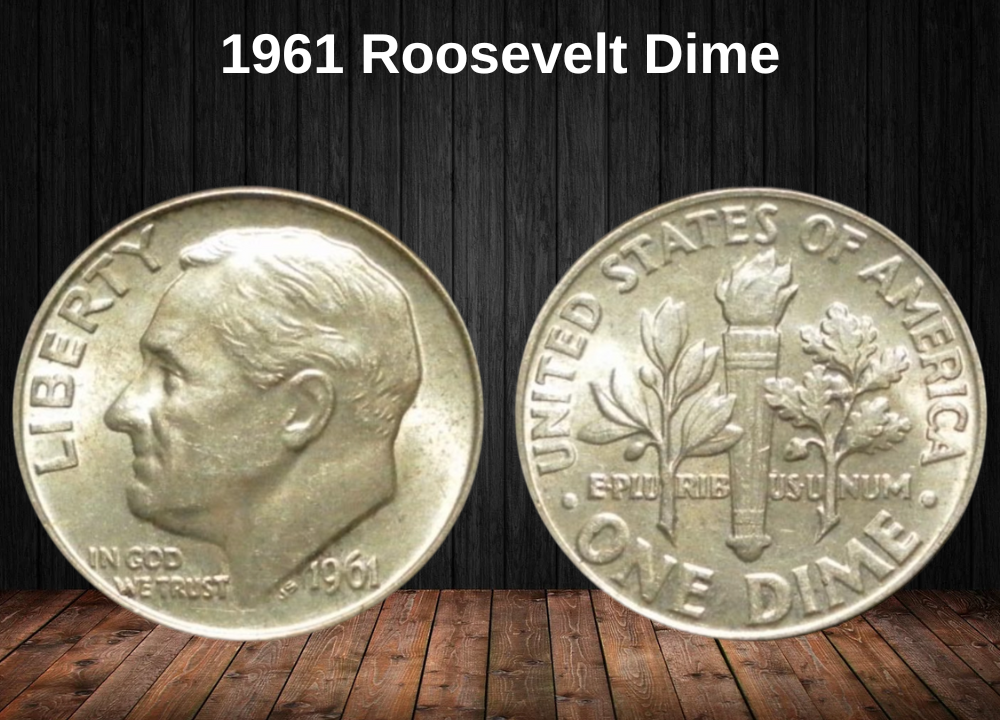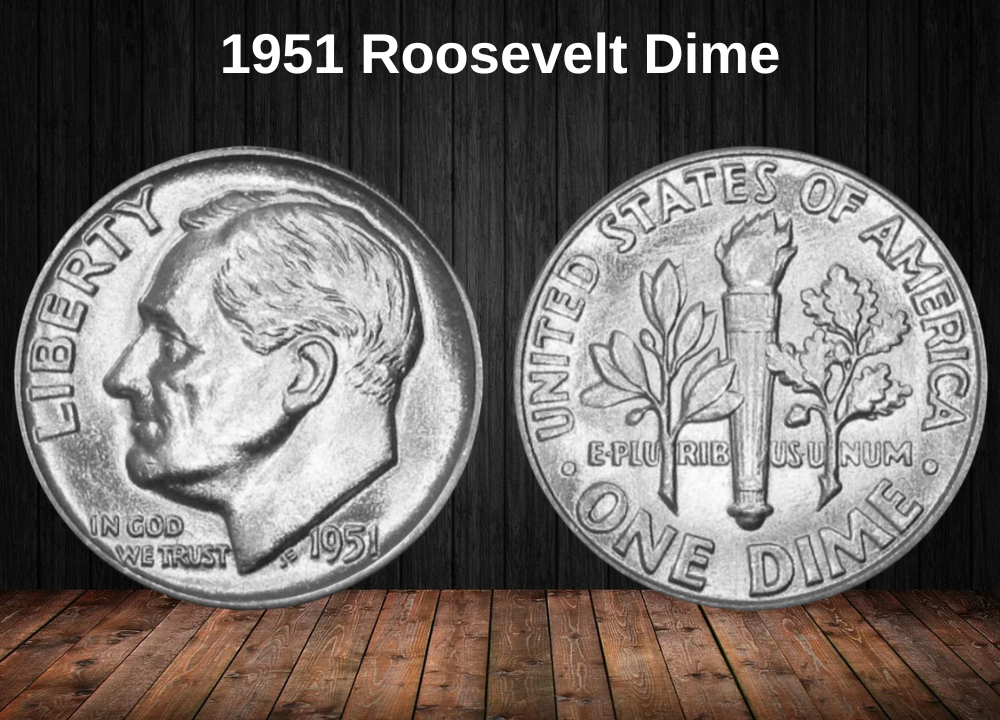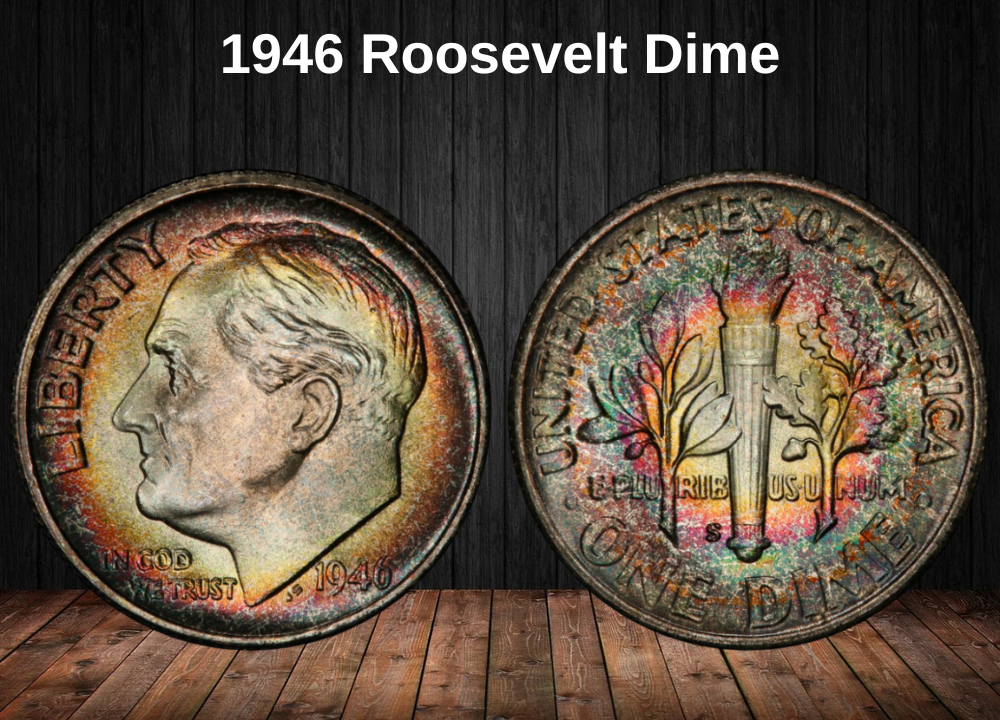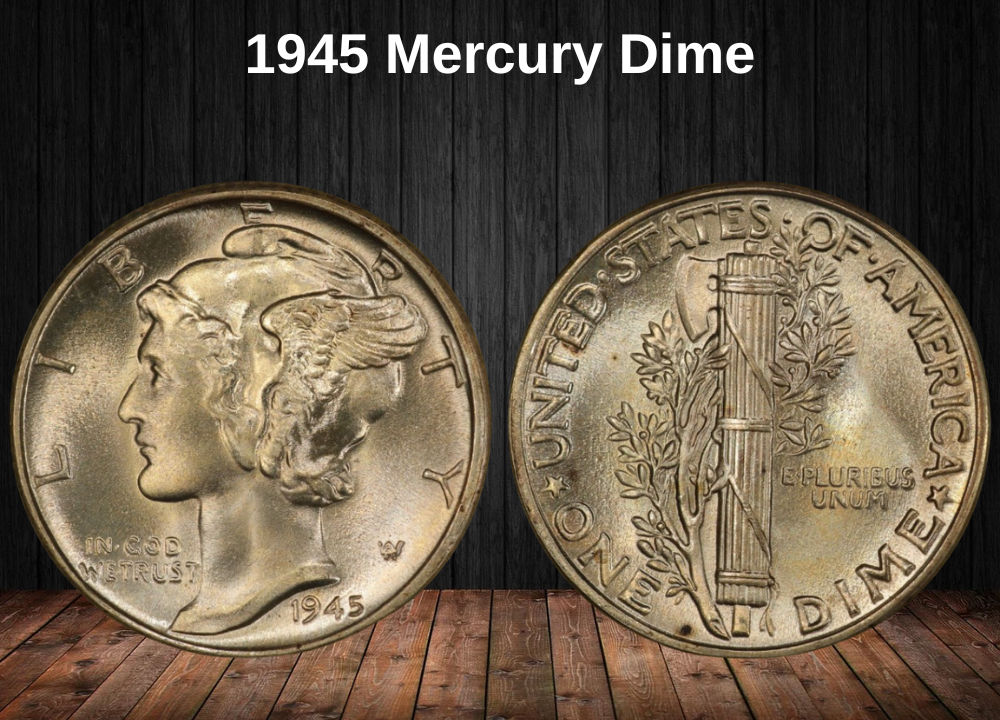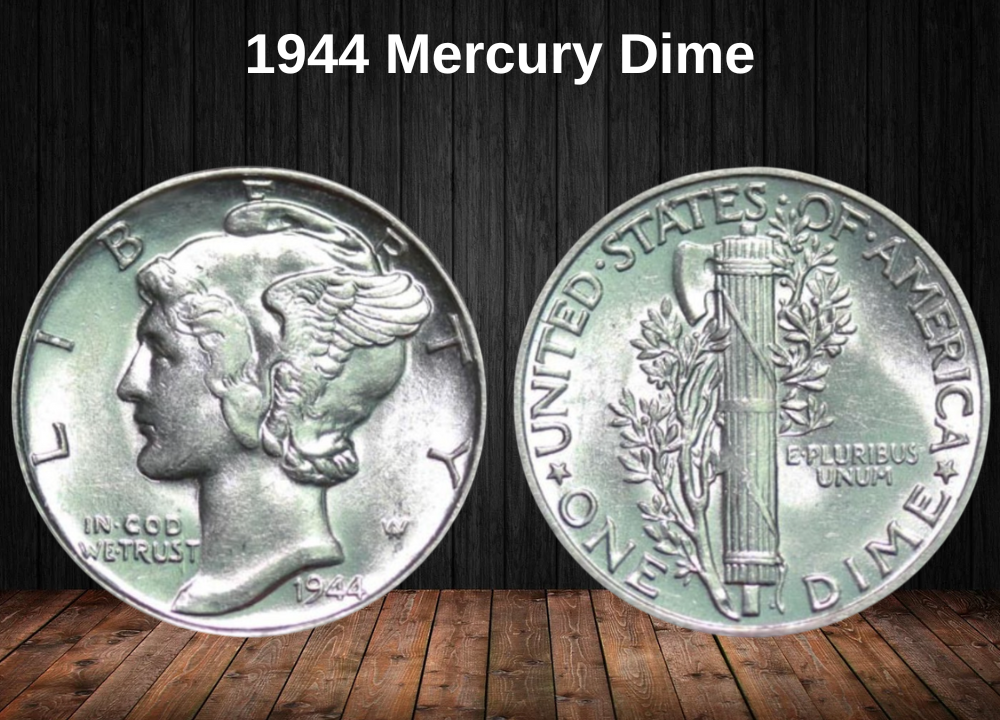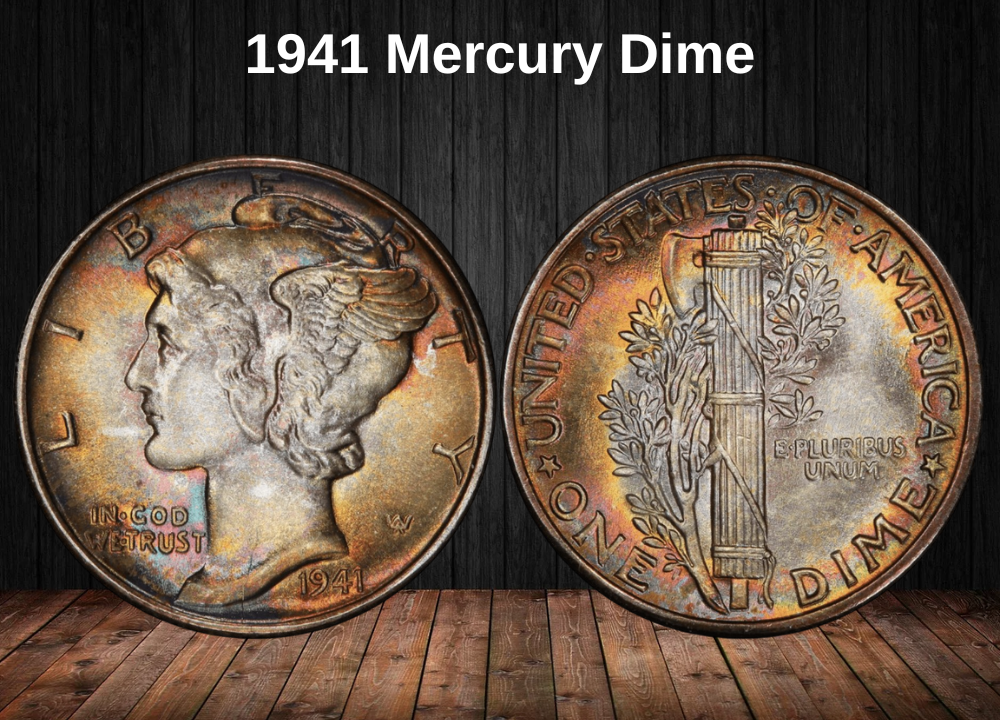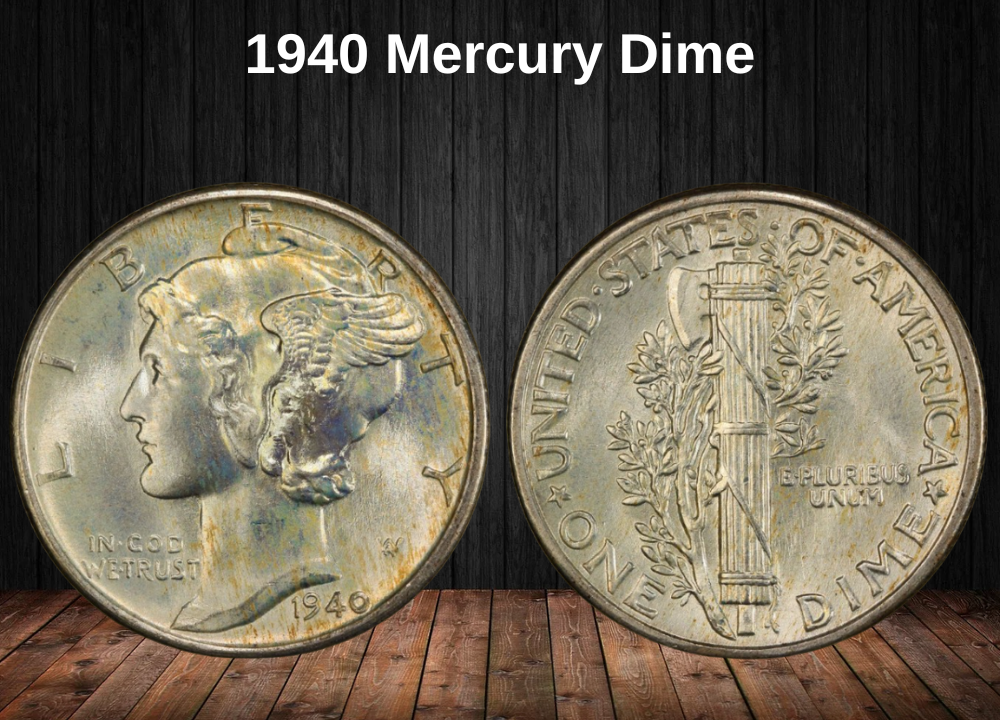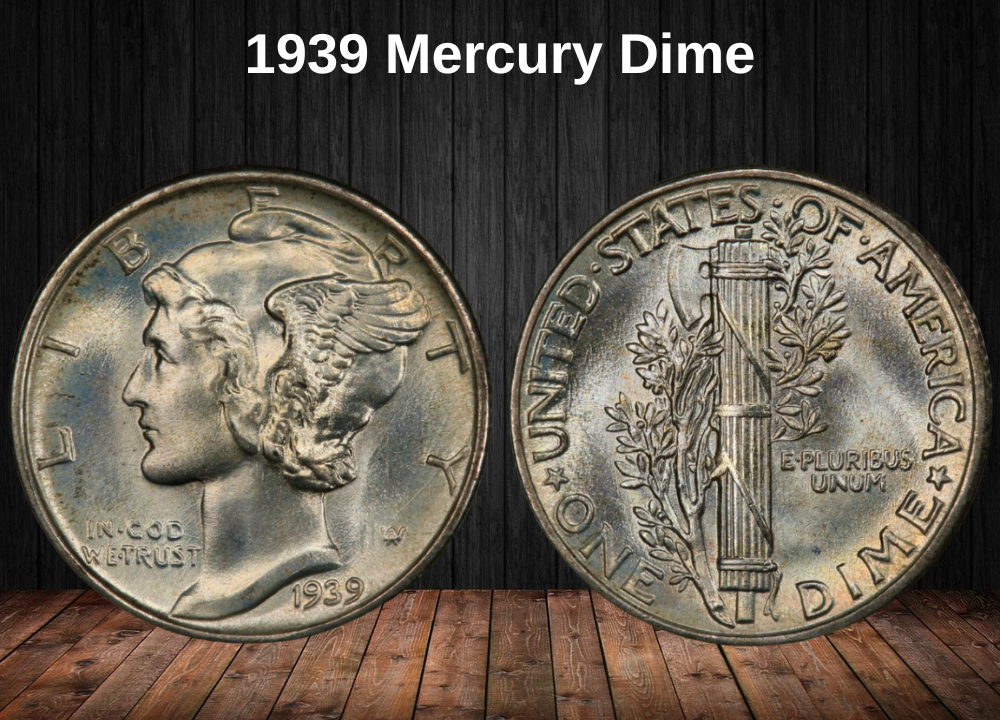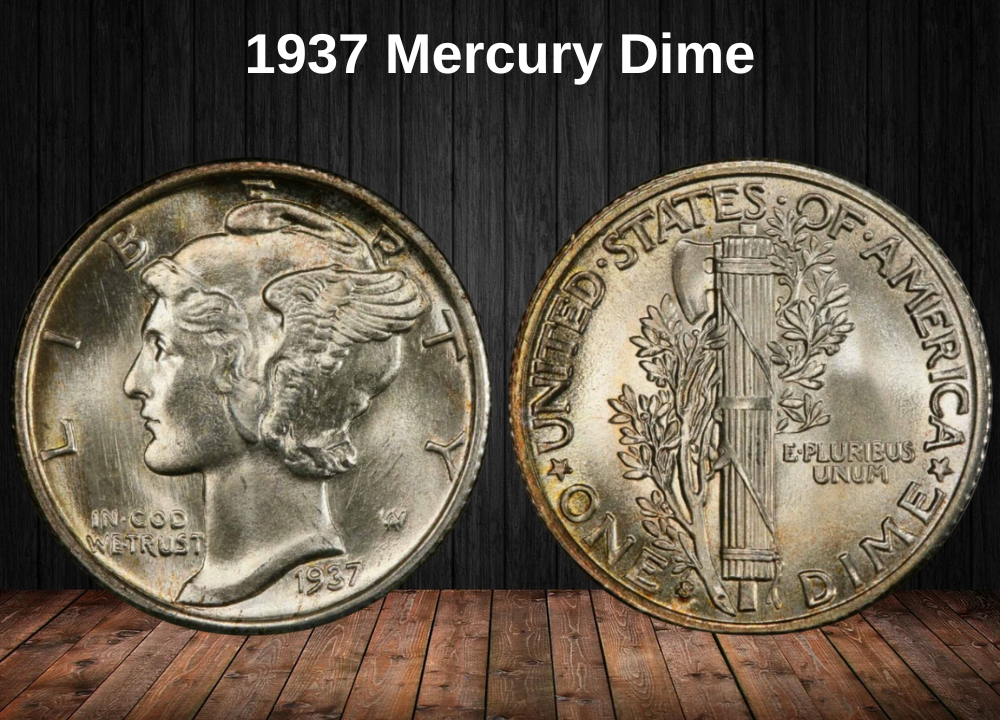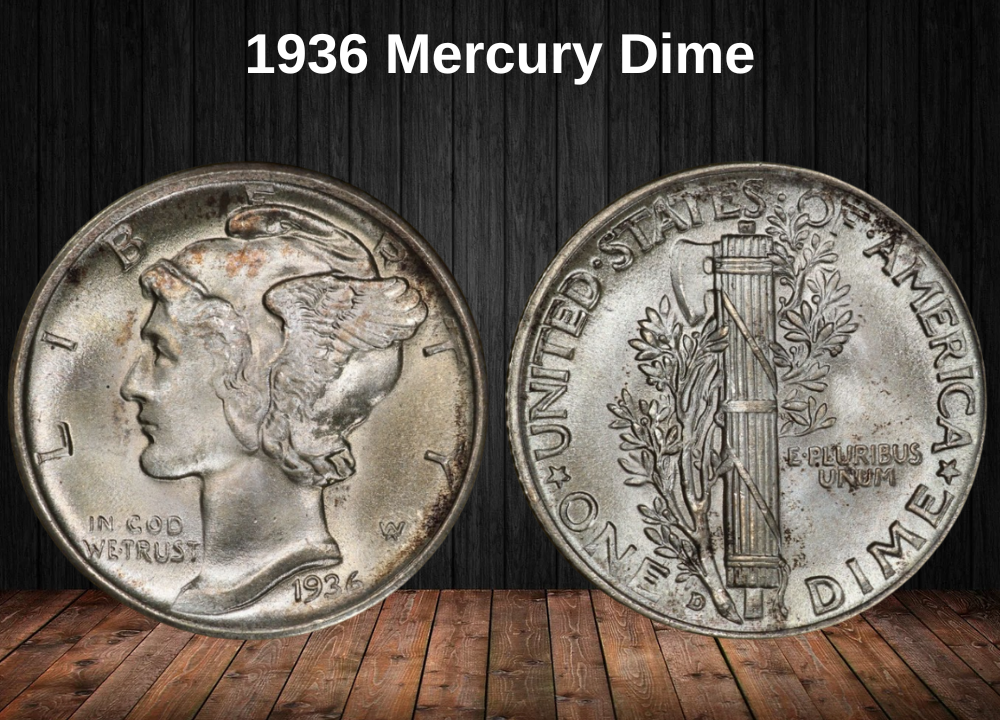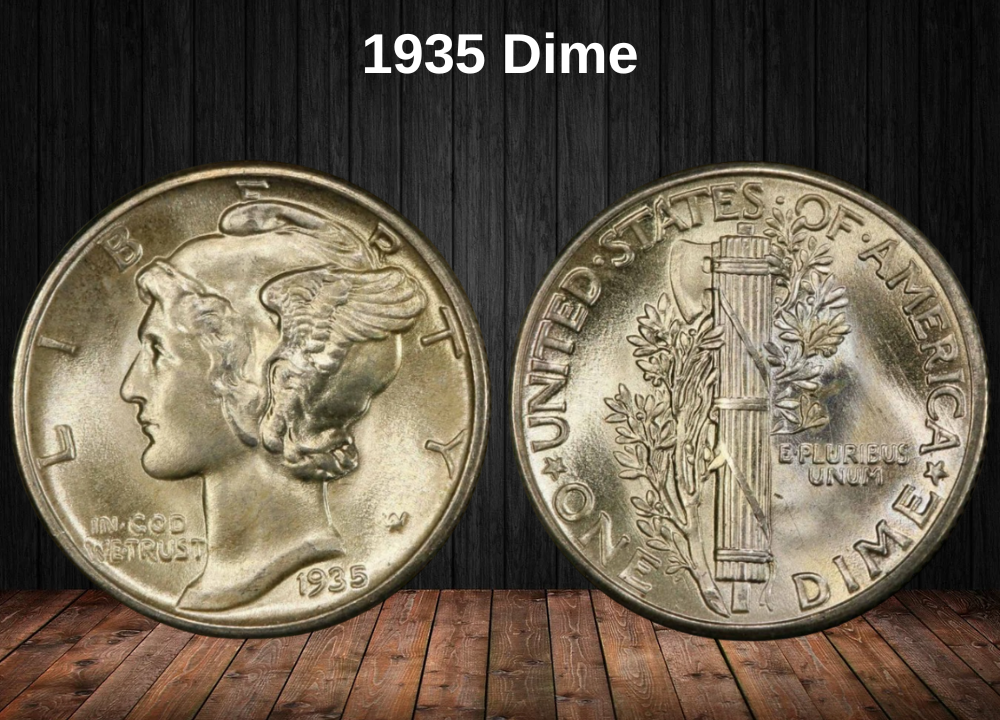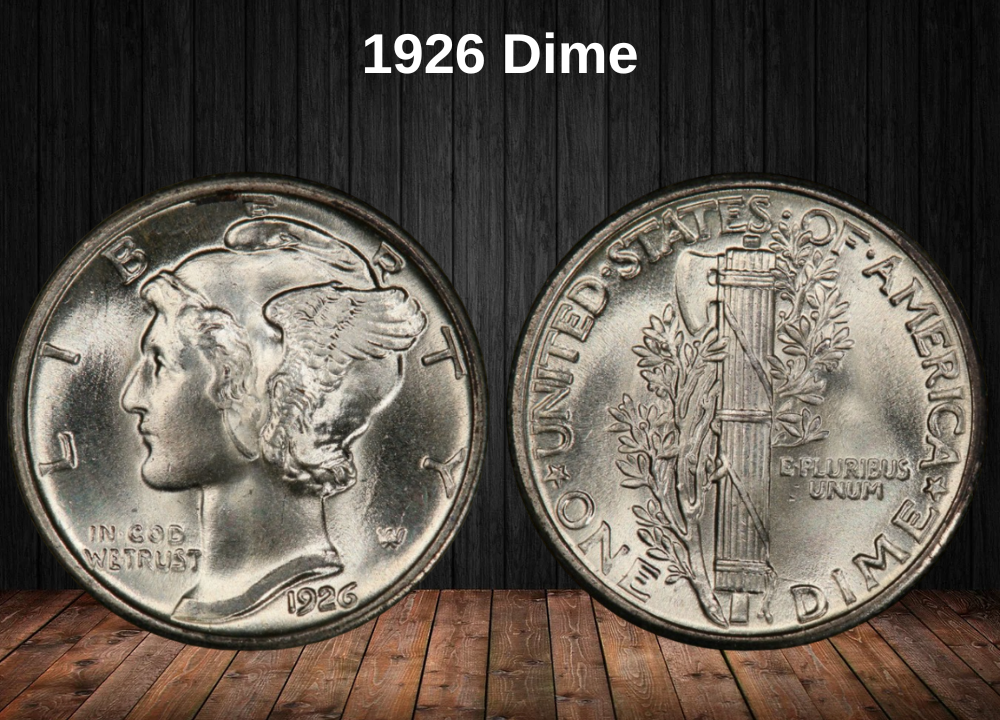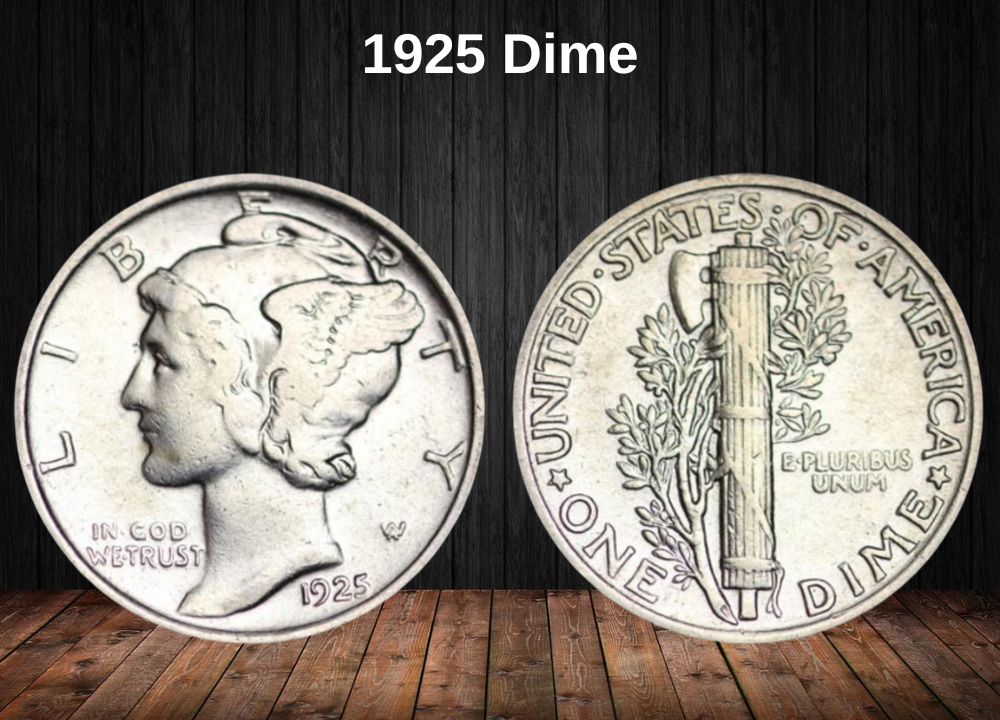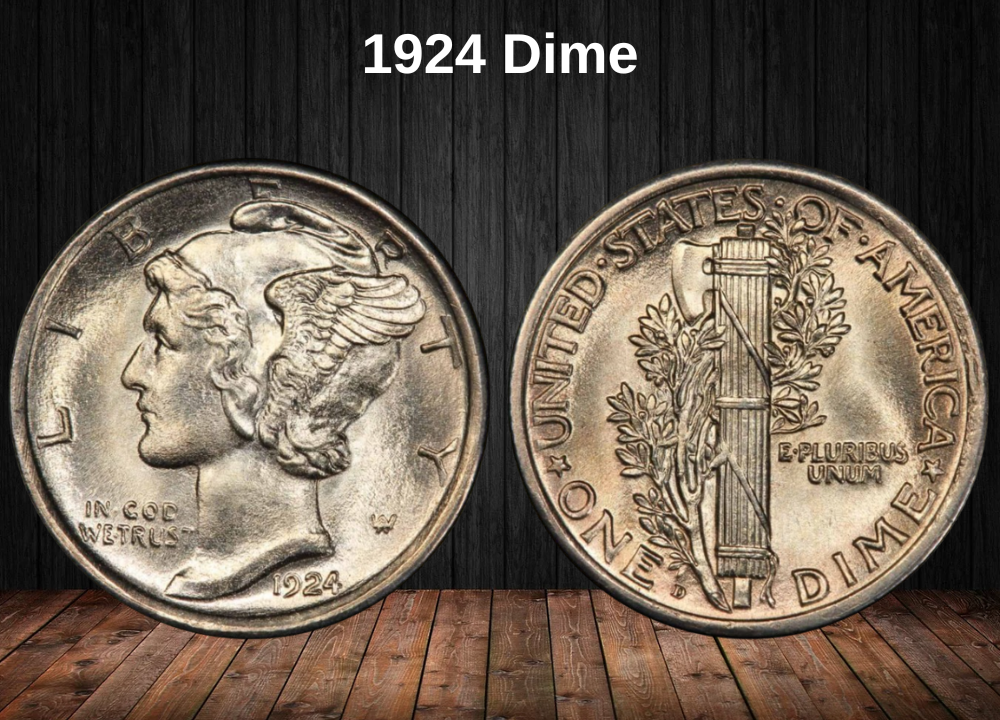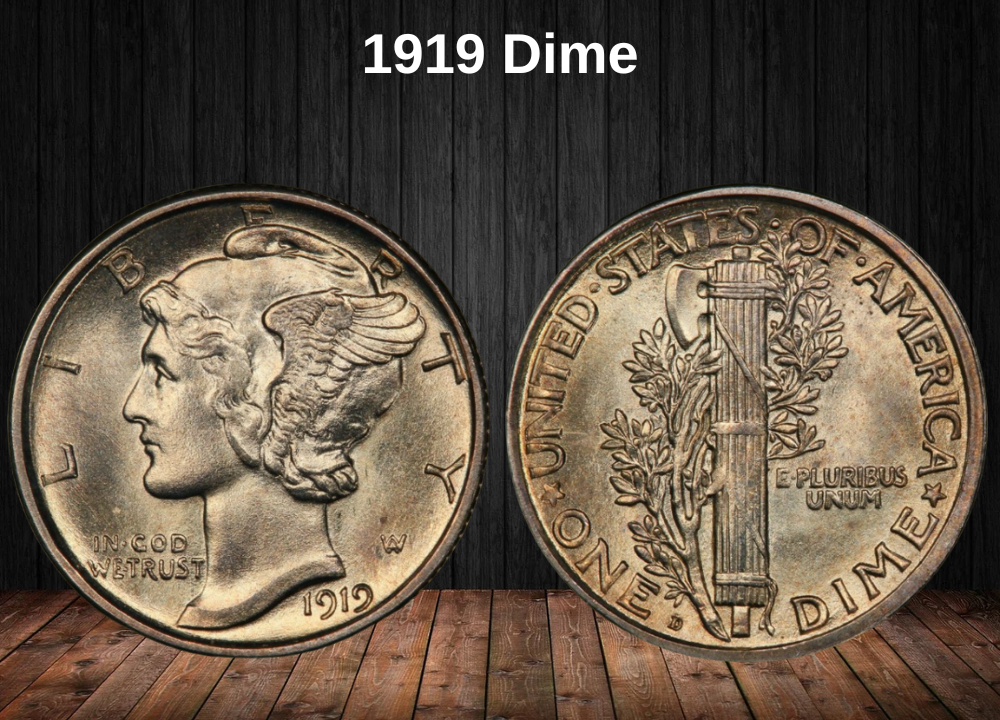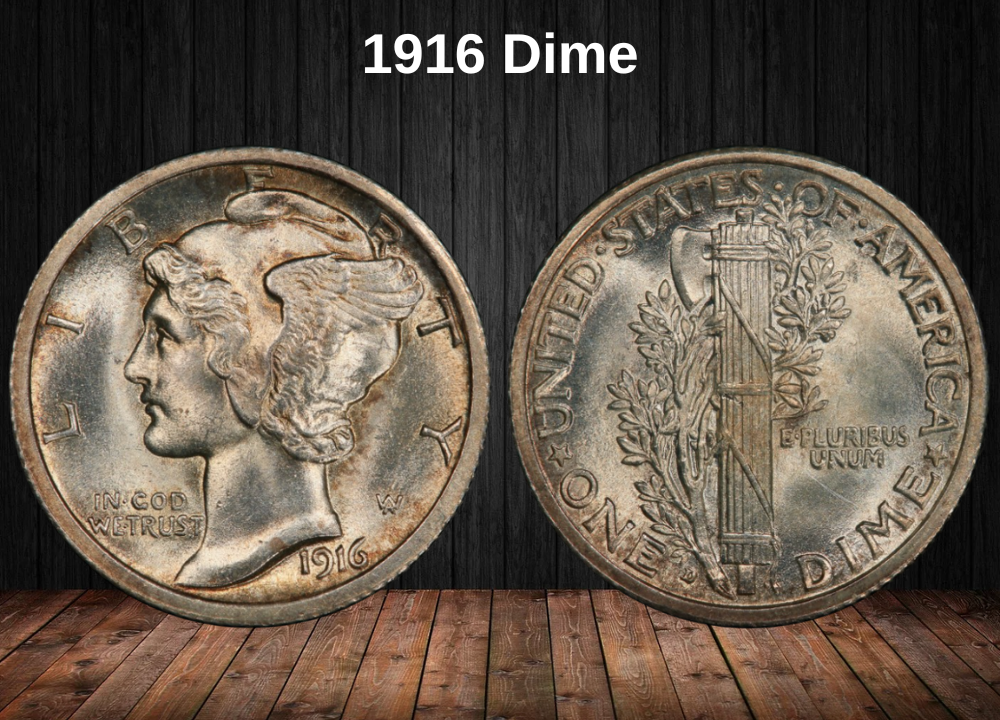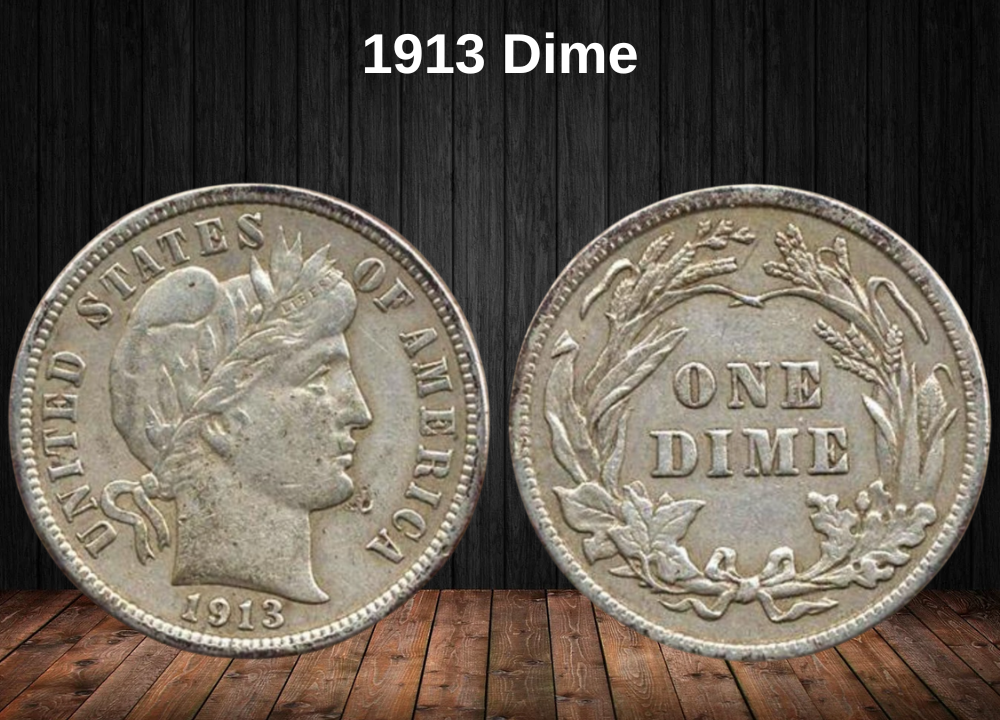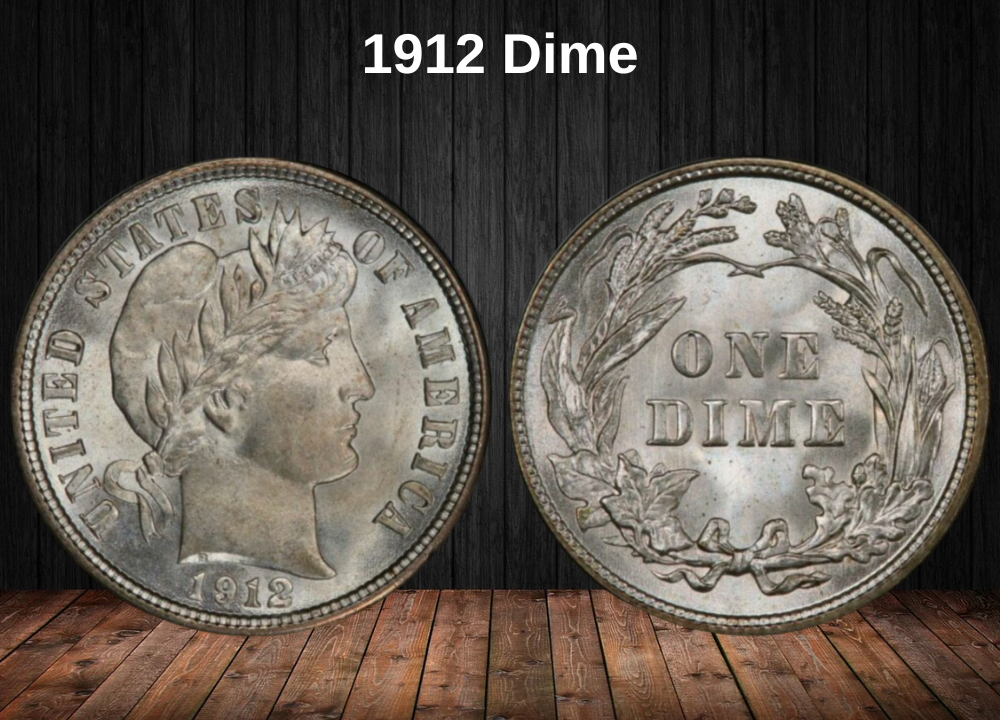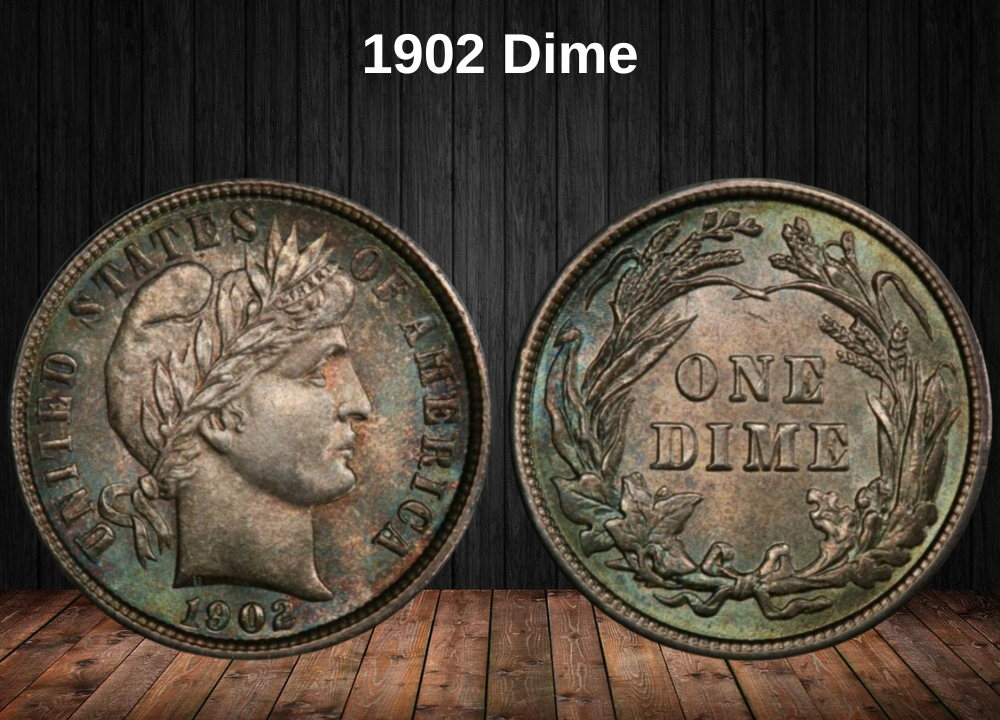Production of Roosevelt dimes began in 1946, when the U.S. Mint replaced the Mercury dime to honor the 32nd U.S. President, Franklin D. Roosevelt. Many Americans believed this tribute was primarily for his leadership during World War II, but Roosevelt also earned this distinction for his lifelong fight against polio and his role in founding the March of Dimes.
By 1968, the Roosevelt dime had already become a familiar coin in circulation. While most 1968 dimes hold only face value, their worth depends on condition, mint mark, and rare errors. Common examples are inexpensive, but certain varieties—especially the 1968 No S Proof dime—can fetch tens of thousands of dollars at auction.
1968 Dime Value Chart
| Condition | 1968 No Mint Mark Dime (Philadelphia) | 1968 D Dime (Denver) | 1968 S Dime (San Francisco Proof) |
|---|---|---|---|
| MS 65 | $10 | $8 | / |
| PR 65 | / | / | $4 |
History of the 1968 Roosevelt Dime
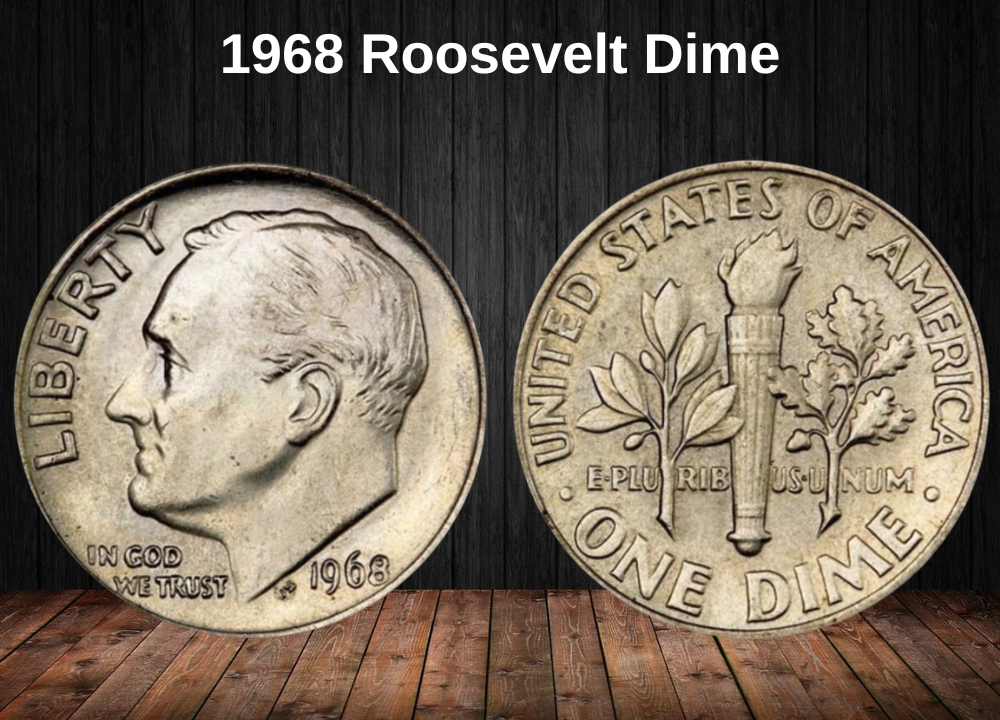
President Franklin Delano Roosevelt passed away on April 12, 1945, just before the end of World War II. Having battled polio for much of his life, Roosevelt became a symbol of perseverance and was strongly committed to the fight against this disease. His legacy inspired the March of Dimes campaign, making it fitting that his portrait would later appear on the U.S. dime.
1968 Dime Types and Mintages
| Location | Year & Type | Mintage |
|---|---|---|
| Philadelphia | 1968 No Mint Mark Dime | 424,470,000 |
| San Francisco | 1968 S Proof Dime | 3,041,506 |
| Denver | 1968 D Dime | 480,748,280 |
| Total | — | 908,259,786 |
Roosevelt was the fourth American President to be honored on a circulating U.S. coin, following Abraham Lincoln (cent), George Washington (quarter), and Thomas Jefferson (nickel). While many believed his image was chosen to commemorate his wartime leadership, the dime was more directly a tribute to his fight against polio.
The U.S. Mint wanted the new coin to debut on January 30, 1946—Roosevelt’s 64th birthday. To accelerate the process, officials assigned the design to Chief Engraver John R. Sinnock, breaking tradition since previous coin designs had been commissioned from outside artists. At the time, critics felt that engravers’ designs were too conservative.
Sinnock, already in poor health, adapted his earlier Roosevelt presidential medal portrait for the dime. The Commission of Fine Arts initially rejected his drafts, but eventually approved the design after multiple revisions.
Even the engraver’s initials—JS—sparked controversy. Conspiracy theorists falsely claimed they stood for Joseph Stalin, not John Sinnock, though this rumor was completely unfounded.
Features of the 1968 Roosevelt Dime
Throughout its history, the Roosevelt dime has undergone several adjustments in both design and composition. The most significant changes came in the mid-1960s: in 1964, the U.S. Mint eliminated silver from its dimes, switching to a copper–nickel alloy. Then in 1968, the mint mark—previously located on the reverse—was moved to the obverse side of the coin, where it remains today.
Obverse Design
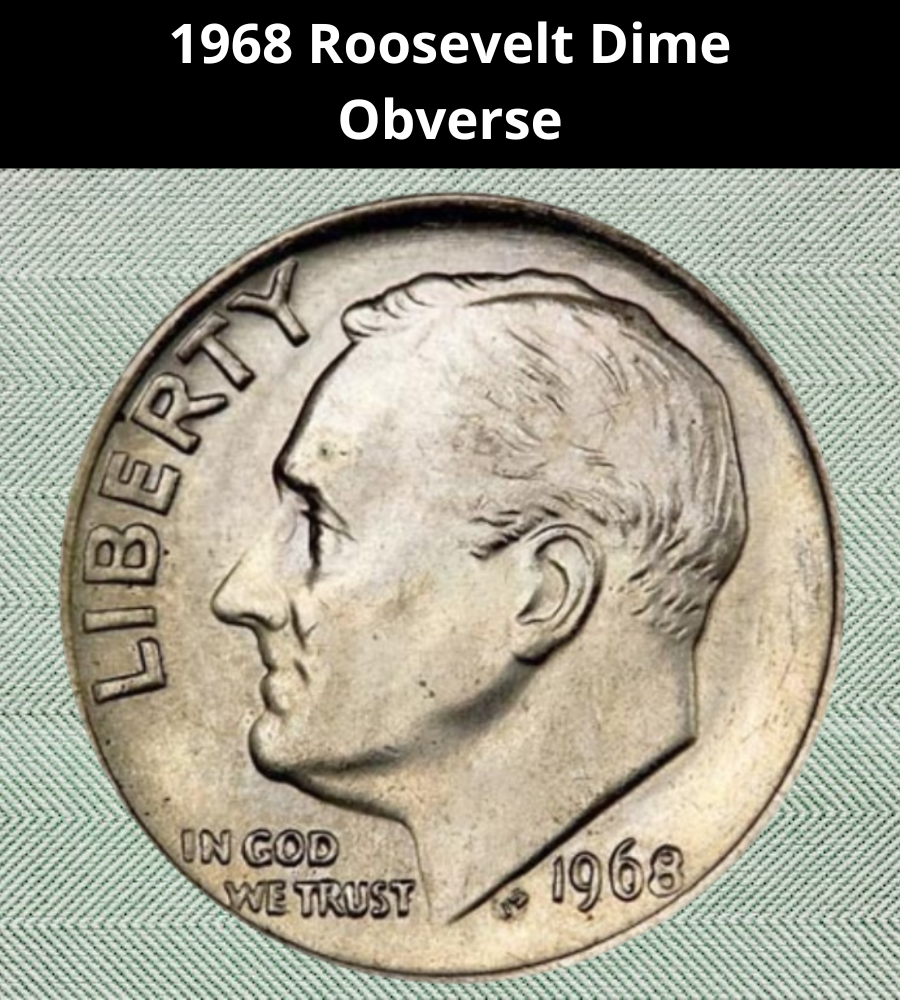
The obverse of the 1968 dime features the left-facing profile of President Franklin D. Roosevelt. His portrait is detailed and dignified, with the following inscriptions surrounding it:
- LIBERTY – along the left rim, in front of Roosevelt’s gaze.
- IN GOD WE TRUST – beneath the chin, aligned left of the neck.
- Date (1968) – on the right side, next to Roosevelt’s neck.
- Mint mark (D, S, or none) – placed to the left of the date, marking the Denver, San Francisco, or Philadelphia Mint.
- JS – the initials of designer John R. Sinnock, located just below the truncation of Roosevelt’s neck.
Reverse Design
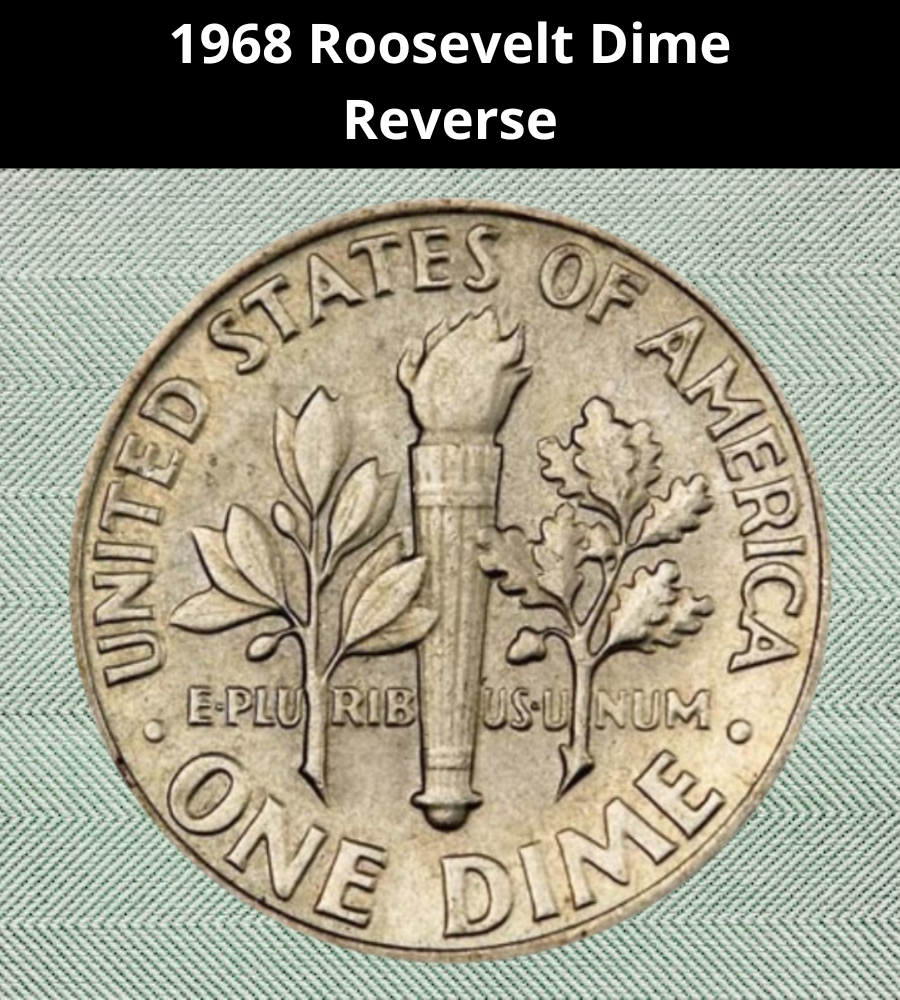
The reverse carries a design rich in American symbolism:
- Torch – in the center, representing liberty and enlightenment.
- Olive branch – on the left, symbolizing peace.
- Oak branch – on the right, symbolizing strength and independence.
- E•PLURIBUS•UNUM – the national motto, divided around the torch and branches.
- UNITED STATES OF AMERICA – along the upper rim.
- ONE DIME – along the lower rim.
Two small dots separate the inscriptions on the top and bottom.
Coin Specifications
| Feature | Details |
|---|---|
| Face value | Ten cents ($0.10) |
| Shape | Round |
| Composition | 91.67% copper, 8.33% nickel (copper core with nickel cladding) |
| Weight | 2.27 g (0.080 oz) |
| Diameter | 17.91 mm (0.705 in) |
| Thickness | 1.35 mm (0.053 in) |
| Edge | Reeded (118 reeds) |
1968 Roosevelt Dime Grading
| # | Grade |
|---|---|
| 1 | Basal State-1 |
| 2 | Fair |
| 3 | Very Fair |
| 4, 5, 6 | Good |
| 7, 8, 10 | Very Good |
| 12, 15 | Fine |
| 20, 30 | Very Fine |
| 40 | Extremely Fine |
| 50 | About Uncirculated |
| 60 | Mint State |
| 65 | Mint State |
| 70 | Mint State |
1968 Dime Value Guides
In 1968, the U.S. Mint struck a total of 908,259,786 Roosevelt dimes across three facilities. These coins are easily identified by their mint mark on the obverse. Note that the San Francisco Mint only produced proof coins this year — no circulation strikes.
1968 No Mint Mark Dime Value (Philadelphia)

With a massive mintage of 424,470,400 pieces, Philadelphia dimes are very common. Circulated examples are generally worth only their face value of $0.10.
- MS 60–62 → around $4
- MS 63 → $5
- MS 65 → $20
- MS 68 → up to $475
The more desirable Full Bands (FB) coins command higher premiums:
- MS 64 FB – MS 66 FB → $18 to $80
- MS 67 FB → up to $500
1968 D Dime Value (Denver)
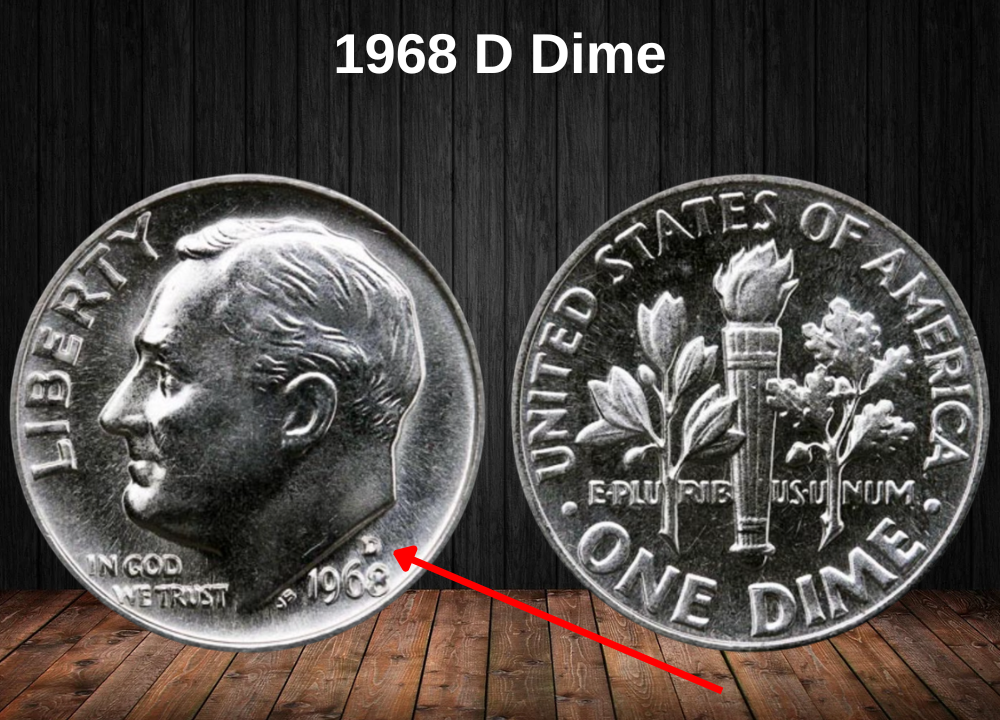
The Denver Mint struck 480,748,280 coins with the D mint mark. Like Philadelphia dimes, circulated examples usually trade for only 10 cents.
- MS 60–62 → $4
- MS 65 → $20
- MS 68 → up to $300
With the Full Bands designation, values increase:
- MS 65 FB → $10
- MS 66 FB → $20
- MS 67 FB → $70
- MS 68 FB → up to $850
1968 S Proof Dime Value (San Francisco)
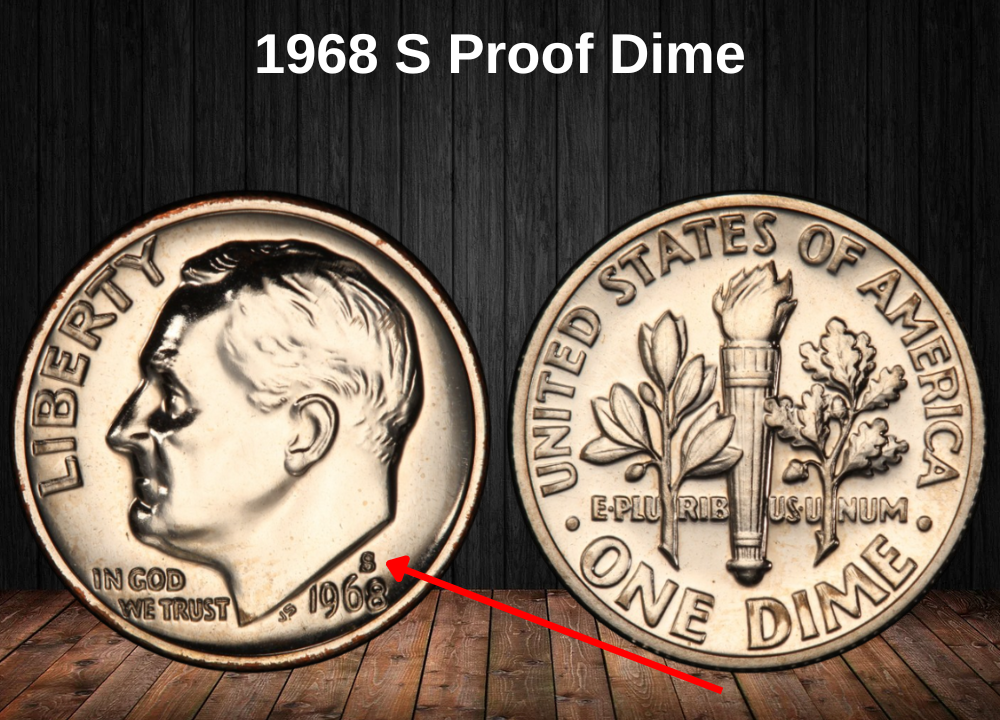
The San Francisco Mint produced 3,041,506 proof dimes in 1968. Despite the low mintage, prices remain moderate, largely based on cameo and deep cameo contrast.
- PR 60–61 (DCAM) → $3
- PR 63 (DCAM) → $6
- PR 64 (DCAM) → $10
- PR 65 (DCAM) → $15
- PR 66 (DCAM) → $16
- PR 67 (DCAM) → $17
- PR 68 (DCAM) → $28
- PR 69 (DCAM) → up to $100
Rare 1968 Roosevelt Dime Error List
Coinage errors are a fascinating segment of numismatics. While most 1968 dimes are common, a small number left the Mint with striking mistakes that make them highly collectible and far more valuable than regular issues. Below are the most notable 1968 Roosevelt dime errors:
Doubled Die Error
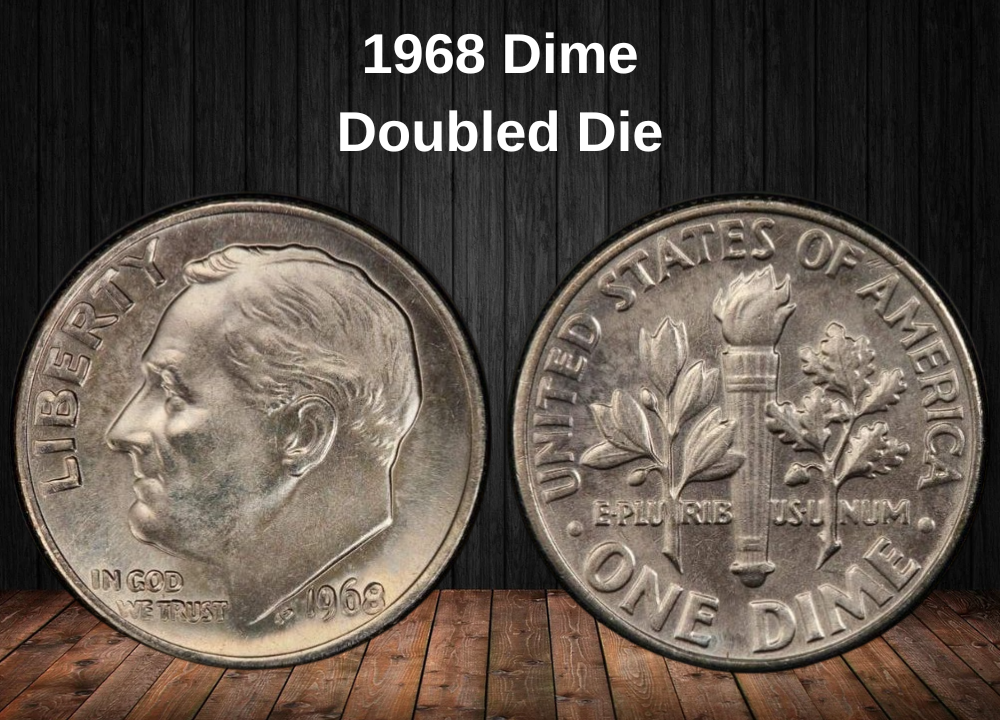
A doubled die occurs when the die imprints the coin design more than once, slightly offset. This creates visible doubling on the date, lettering, or devices.
- Values generally range from $65 to $160, depending on grade and clarity of the doubling.
- Stronger doubled dies with sharp separation can attract even higher collector demand.
1968 No S Proof Dime
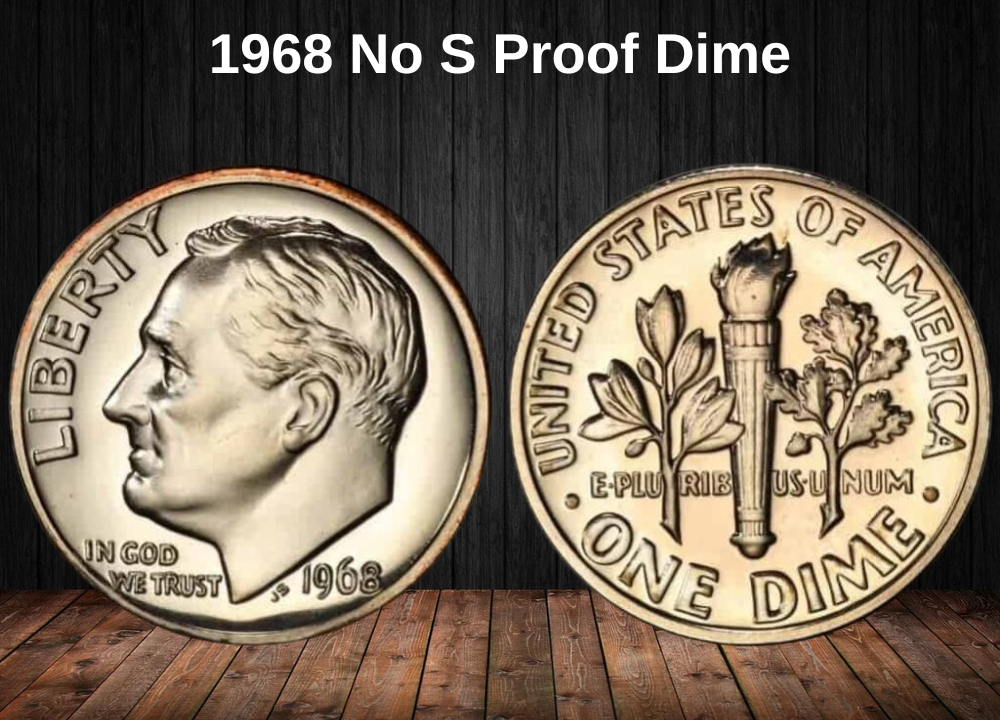
Perhaps the most famous error of the year, the 1968 No S Proof dime was struck at the San Francisco Mint without its mint mark. Normally, all 1968-S proof coins should carry the “S.”
- Fewer than 30 examples are believed to exist, making it one of the rarest modern U.S. coinage errors.
- Auction prices reflect its scarcity:
- PR 65 → $12,000
- PR 66 → $13,500
- PR 67 → $16,800
- PR 68 → $20,000
- PR 69 → $38,000
- Cameo contrasts (CAM) bring even higher premiums, with top examples reaching $44,000 (PR 69 CAM).
Similar “No S” proof mint mark omissions appeared in later U.S. coinage, such as the 1970 Roosevelt dime, 1971 Jefferson nickel, 1975 Roosevelt dime, 1976 Eisenhower dollar, and 1990 Lincoln cent.
Re-Punched Mint Mark (RPM)
Until 1990, mint marks were hand-punched into dies. Misalignment during punching often led to re-punched mint mark varieties (RPMs), where the “S” appears doubled or shifted.
- The 1968 S/S proof dimes are especially collectible.
- Auction records:
- PR 67 S/S dime sold for $590 (2015)
- PR 68 CAM S/S dime sold for $1,000 (2021)
Wrong Planchet Error
Occasionally, a 1968 dime was struck on a leftover 90% silver planchet (from pre-1965 coinage) instead of the standard copper-nickel clad.
- These pieces can be identified by their weight (2.5 g for silver vs. 2.27 g for clad).
- Such errors are scarce and often sell for thousands of dollars, depending on condition.
Off-Center Strike
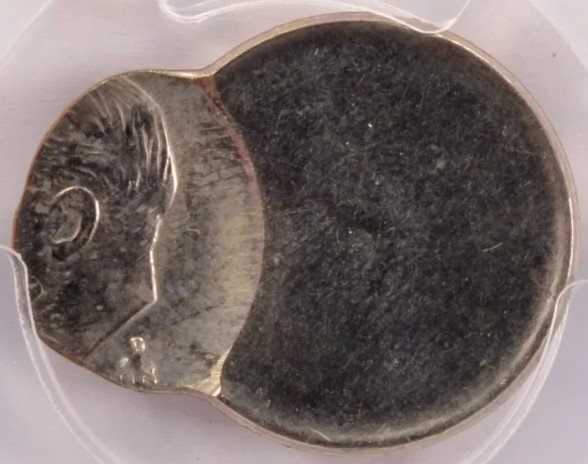
An off-center strike happens when the blank planchet is not properly aligned with the dies.
- The result is a coin with part of its design missing, replaced by a blank crescent-shaped area.
- Slight off-centers (5–10%) are modestly collectible, often worth $50–$100.
- Dramatic off-centers (40%+ with full date visible) can command $200–$500 or more.
Where to Sell Your Dime Coin?
Now that you know the value of your dime, the next step is deciding where to sell it. There are several trusted options—both online and in person—that can help you get the best price depending on your coin’s rarity and condition.
To see the full list of recommended places, along with their advantages and disadvantages, check our complete guide on where to sell your dime coins.
FAQ About the 1968 Roosevelt Dime Value
What makes the 1968 Roosevelt dime valuable?
Most 1968 dimes are only worth face value (10¢) in circulation. Their true value comes from high-grade Mint State coins, Full Band designations, and rare errors, especially the famous 1968 No S proof dime, which can be worth tens of thousands.
How much is a regular 1968 dime with no mint mark worth?
A Philadelphia 1968 dime (no mint mark) is very common. Circulated examples are worth only 10¢. In uncirculated grades:
- MS 63 → about $5
- MS 65 → about $10
- MS 68 → up to $475
Full Band (FB) designations bring higher premiums, with MS 67 FB valued around $500.
What is the value of the 1968-D Roosevelt dime?
The Denver Mint produced over 480 million dimes in 1968. Circulated examples are worth face value. Uncirculated prices:
- MS 65 → around $8–$10
- MS 67 → about $65
- MS 68 → up to $300
The most valuable are Full Band (FB) coins, which can sell from $10 (MS 65 FB) to $850 (MS 68 FB).
Are 1968-S proof dimes valuable?
The San Francisco Mint struck only proofs in 1968, with just over 3 million produced. Most are affordable:
- PR 65 → about $4–$6
- PR 69 Deep Cameo (DCAM) → up to $100
They are collectible but not rare compared to the No S variety.
Why is the 1968 “No S” proof dime so rare and expensive?
All 1968 proof coins should have carried the “S” mint mark, but a small number were mistakenly struck without it. Fewer than 30 are known today. Auction values:
- PR 65 → about $12,000
- PR 68 → about $20,000
- PR 69 CAM → up to $44,000
This makes it one of the rarest and most valuable modern U.S. dimes.
What errors should I look for on 1968 dimes?
Some of the most collectible errors include:
- Doubled die → $65–$160
- Re-punched mint mark (RPM) → up to $1,000 in proof coins
- Wrong planchet (silver instead of clad) → several thousand dollars
- Off-center strikes → $50–$500 depending on severity
Is it worth getting a 1968 dime graded?
Yes—if you suspect it is a No S proof, a high-grade Mint State (MS 67–68), or has a clear Full Band designation. Circulated and common uncirculated examples are not worth the grading cost, but key errors and top-grade proofs are absolutely worth certification.


